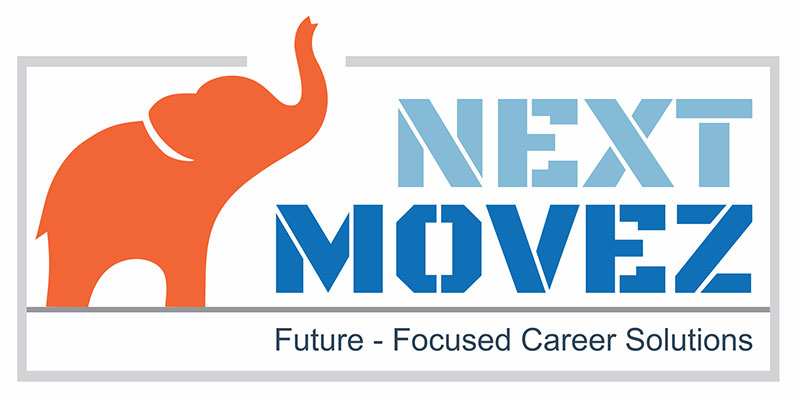Introduction: Addressing a Common Career Challenge
I remember a conversation I had with a young professional named Riya. She was ambitious, driven, and eager to build a thriving career. But there was one problem—she felt stuck. Despite having a solid degree and a few years of experience, she noticed her peers moving ahead while she remained in the same role. Frustrated, Riya told me, “I thought choosing a ‘safe’ career would mean stability. But now, I feel outdated, and I’m struggling to keep up with new trends.”
Does that sound familiar? The reality is that this feeling isn’t uncommon. Many people, whether they’re fresh graduates or mid-career professionals, find themselves in a similar spot. They start with enthusiasm, but when job demands evolve, they realize their skills aren’t enough to stay competitive.
In today’s fast-changing job market, one thing is clear—learning can’t stop when you get your degree. Upskilling is no longer optional; it’s essential to staying relevant and thriving in your career. Let me explain why.
Over the past year, I’ve had countless conversations like this, all pointing to the same undeniable truth: a degree alone is not enough. The World Economic Forum (WEF) reports that by 2025, 50% of all employees will need reskilling. According to the WEF’s Future of Jobs Report 2025, an average of 39% of current skill sets are expected to evolve or become obsolete between 2025 and 2030. While this “skill instability” has decreased compared to previous reports, this shift may be attributed to the growing number of workers (50%) who have already undergone training, reskilling, or upskilling initiatives. The World Economic Forum’s Reskilling Revolution initiative seeks to equip one billion people with enhanced education, skills, and economic opportunities by 2030, highlighting the urgent global demand for workforce reskilling.
These findings underscore the transformative impact of technological advancements on the workforce and the vital necessity of reskilling to stay competitive in an ever-evolving job market.

Emotional vs. Logical Decisions: Why Career Choices Can Go Wrong
Why does career decision-making feel so complicated in the first place?
Let me take you back to when you were a teenager making those big life decisions. Did you ever pick a path simply because it felt right at the moment, only to regret it later? Well, you’re not alone. A survey by the American Student Assistance organization found that 45% of high school graduates felt they lacked sufficient information to make confident career choices. And there’s a scientific reason for that.
Our brain’s prefrontal cortex, the area responsible for logical decision-making, planning, and future thinking, doesn’t fully develop until around age 25. Meanwhile, the limbic system—the brain’s emotional and reward center—is fully active during the teenage years. This makes teens naturally inclined to prioritize short-term excitement over long-term outcomes.
Combine that with social pressure, family expectations, and viral trends on social media, and you have a recipe for impulsive career decisions. That’s why so many people find themselves switching careers years later, frustrated and dissatisfied.
The good news? Upskilling can help bridge this gap. By consistently upgrading your skills, you can adapt, explore new opportunities, and future-proof your career—even if your initial choice wasn’t perfect.
For example, take e-gaming and social media. These industries are booming, drawing in many students. But passion alone isn’t enough. Long-term success requires developing relevant skills, understanding job market trends, and preparing for career shifts if needed.
Tip for parents: Encourage teens to combine their passions with practical skills to create lasting career success. While excitement for trends like e-gaming or social media is natural, developing skills such as content creation, digital marketing, or data analysis can turn those interests into stable, long-term career opportunities.
Action Step: Ask your teen: “What excites you most right now?” Then explore skills they can build around that passion to unlock future career paths.
Staying Ahead in a Competitive Job Market

From my experience guiding students and professionals, I’ve learned that in today’s fast-changing job market, having just one set of skills isn’t enough. Employers now seek candidates who bring a powerful blend of technical expertise and soft skills to the table.
While technical skills like coding, data analysis, or digital marketing are crucial, think of skills like apps on a smartphone—the more relevant ones you acquire and keep updated, the more adaptable and valuable you become.
But here’s the challenge: How do you know which skills to prioritize?
This is where tools like NextMovez can make all the difference — helping you identify the right skills to focus on and guiding you toward meaningful career growth.
NextMovez is designed to provide personalized solutions that align with your career goals. Our platform offers:
1. Skill-Mapping Tools – Identify Your Strengths & Gaps
What It Does: Skill-mapping tools help you assess your current abilities, identify strengths, and uncover areas where you need improvement.
Examples of Skill-Mapping Tools:
- NextMovez – Offers career assessments to match your interests with in-demand skills.
- 16Personalities – Helps identify personality strengths that align with specific career paths.
- Skills Matcher (by O*NET) – Provides a tailored list of occupations based on your skillset.
Pro Tip:
- Encourage teens to reflect on their hobbies, school activities, or leadership roles. For instance, if your child enjoys organizing events, their strengths may include project management, team coordination, or problem-solving — valuable skills for careers in marketing, event planning, or entrepreneurship.
- Identify skill gaps by comparing these strengths to the key skills needed in their desired industry.
2️. Career Insights – Understand Industry Trends & Demands
What It Does: Staying informed about emerging trends helps you align your skills with the demands of future careers.
Examples of Career Insights Platforms:
- LinkedIn’s ‘Jobs on the Rise’ Report – Highlights fast-growing roles and essential skills.
- Coursera’s Skills Report – Tracks trending skills in fields like tech, business, and creative arts.
- Glassdoor & Indeed – Showcase job descriptions that list must-have skills for various roles.
Pro Tip:
- If your child is passionate about gaming, look beyond just playing. Industry insights may reveal opportunities in game design, UX/UI development, or eSports management.
- For students interested in social media, explore growth areas like digital marketing, content creation, or influencer marketing strategies.
Encouraging your child to explore these insights helps them make informed decisions rather than relying on outdated advice or social trends alone.
3️. Tailored Guidance – Step-by-Step Learning Recommendations
What It Does: Personalized guidance helps students focus on the right skills, resources, and certifications that match their career goals.
Examples of Tailored Guidance Strategies:
- Skill-Building Platforms: Websites like Udemy, edX, and Khan Academy offer structured learning paths for various industries.
- Certification Programs: Fields like AI, coding, finance, or creative design often require specific certifications. Platforms like Google Certifications, HubSpot Academy, or AWS Training can boost credibility.
- Mentor-Led Learning: Connecting with industry professionals through platforms like MentorCruise or LinkedIn can provide invaluable real-world insights.
Pro Tip:
- Suppose your child dreams of becoming a YouTuber. Instead of just recording videos, they can follow tailored learning paths that focus on video editing, SEO for content growth, and personal branding — skills that will strengthen their long-term success.
- For students interested in healthcare, certifications in first aid, medical coding, or patient care skills can provide a solid foundation before committing to a full-time program.
Final Action Tip for Parents & Students:
Ask your child: “What skills do you think you’re great at? And what’s one skill you’d love to improve?”
Then use these tools and strategies to create a clear, actionable plan — combining their interests with industry-relevant skills. With the right insights and learning steps, they’ll be equipped to confidently shape a career that’s both fulfilling and future-proof.
Ready to future-proof your career? Start by exploring NextMovez today and take the first step towards building skills that matter.
Emerging Skills Required in Today's Market
Here are some essential skills gaining prominence across industries and what you can do to build them:
- Data Literacy – Understanding how to analyze and interpret data is crucial. Start by exploring beginner courses in data analytics on platforms like Coursera or Udemy.
- Digital Marketing – With businesses moving online, digital marketing skills are in high demand. Enroll in certifications like Google Digital Garage or HubSpot Academy to sharpen these skills.
- Artificial Intelligence (AI) & Machine Learning (ML) – AI is transforming industries. Consider starting with foundational AI programs to understand core concepts.
- Emotional Intelligence & Communication – As remote work rises, strong communication and emotional intelligence are more critical than ever. Joining leadership workshops or practicing public speaking can boost these skills.
- Cybersecurity Awareness – As cyber threats grow, understanding basic security measures can give you a competitive edge. Platforms like Cisco Networking Academy offer beginner-friendly content.
Case Study: How Upskilling Transformed Riya’s Career Path
Riya was always passionate about creative design, but like many students, she felt pressured to pursue a “safer” career in engineering. Encouraged by family advice and societal expectations, she enrolled in an engineering program, assuming it was the most stable choice.
However, two years into her studies, Riya realized she felt unfulfilled. Coding assignments felt draining, and she often found herself spending hours sketching designs or exploring design software in her free time. Despite her interest in creative work, she believed switching careers would mean starting from scratch — and she worried about falling behind her peers.
That’s when Riya discovered NextMovez. Using the platform’s skill-mapping tool, she identified transferable skills from her engineering background — such as problem-solving, technical understanding, and structured thinking — that could support a transition to UI/UX design. The platform’s tailored guidance helped her identify key design certifications like Adobe XD, Figma, and Human-Centered Design Principles that could fast-track her career shift.
In less than a year with her consistent upskilling efforts, Riya built a strong portfolio and secured a junior UX design role within six months. Her engineering background even became a strength, helping her better collaborate with developers and understand technical constraints in her design projects.
Riya’s journey is a testament to this truth: when passion meets purposeful action, success becomes inevitable. She didn’t leave her past behind—she used it as a foundation to grow.
What Parents and Students Can Do?
As someone who’s worked closely with students and parents for years, I know how overwhelming career decisions can feel. Social trends, peer pressure, and impulsive choices often steer teens down paths they later regret. That’s why I always recommend a structured approach that blends self-awareness, practical insights, and emotional clarity to help teens make thoughtful career choices.
1️. Identify Strengths, Interests, and Values
In my experience, the biggest breakthroughs happen when teens recognize what they’re naturally good at, what excites them, and what kind of impact they want to make in the world. This clarity helps filter out impulsive career choices.
How to Start:
Ask guiding questions like:
- “What activities make you lose track of time?”
- “What subjects or hobbies do you excel at?”
- “If you could solve one big problem in the world, what would it be?”
Example:
I once worked with a student who loved organizing school events. When we explored this further, we identified her strengths in planning, leadership, and communication — skills perfect for careers in event management, marketing, or public relations.
Use self-discovery tools: Platforms like 16Personalities, Myers-Briggs, or StrengthsFinder provide great insights into your teen’s natural strengths.
Pro Tip: Encourage your teen to reflect not just on what they’re good at, but on what energizes them. Skills can be learned, but passion is what drives long-term success.
2️. Research Career Realities
Over the years, I’ve seen students pursue careers based on surface-level excitement — only to feel disappointed later when the day-to-day reality didn’t match their expectations.
- Some following questions may solve your confusion:
- What does a typical day in this career look like?
- What are the biggest challenges in this field?
- Does this career align with my long-term goals?
- What is the impact of this career on society or individuals?
- What are the skills and qualifications needed for this career?
How to Avoid This Trap:
- Explore career videos or interviews: Platforms like Job Shadow, YouTube, or LinkedIn Learning offer real-life insights into different professions.
- Encourage job shadowing or internships: Hands-on experience helps teens understand the realities of a career before committing.
- Connect with professionals: Talking to someone already working in their chosen field can offer invaluable insights.
Example:
I once guided a student who dreamed of becoming a veterinarian because of her love for animals. After shadowing a local vet, she realized the emotional demands — managing emergencies, handling sick pets — didn’t align with her personality. This experience helped her pivot to wildlife conservation, where she could still pursue her passion in a role that suited her better.
Pro Tip: Ask your teen: “Would you still enjoy this job even on its toughest days? Or “What aspects of this career energize you, and which ones might feel challenging or exhausting?” These questions often spark powerful reflections.
3️. Evaluate Emotional Satisfaction
A career may seem ‘practical,’ but if it doesn’t align with your teen’s values or interests, they may feel unfulfilled later.
How to Assess This:
Encourage your teen to ask themselves:
- “Does this career excite me?”
- “Does it match my values?” (e.g., creativity, social impact, financial security)
- “If success and financial stability were certain, would this still be the career path you’d want to pursue?”
Example:
A student I worked with once pursued accounting purely for financial stability. But deep down, she was drawn to graphic design. After some reflection, we explored roles like UI/UX design and digital branding, where she could blend her love for creativity with practical career stability.
Pro Tip: Encourage your teen to reflect on what brings them joy outside of academics — this often reveals hidden career potential.
4️. Balance Emotion with Practicality
Choosing a career based on passion alone isn’t enough — stability, earning potential, and work-life balance also matter.
How to Do This:
- Research market trends: Identify careers with growth potential.
- Assess earning potential: While money shouldn’t be the sole focus, understanding salary trends helps teens make realistic choices.
- Consider lifestyle impact: Some roles demand intense working hours.
Ask yourself: “What lifestyle do you envision for yourself 10 years from now, and how will this career align with or challenge that goal?”
Ready to future-proof your career? Connect with NextMovez experts today and explore the best upskilling opportunities to stay ahead!
Conclusion: Takeaways & Call-to-Action
From my experience working with students and professionals, I’ve seen one clear truth: waiting for opportunities to find you just doesn’t work anymore. In today’s fast-changing job market, upskilling isn’t optional — it’s essential. The key to staying relevant and thriving is actively building new skills that align with industry trends and future demands.
Here’s what you can start doing today:
- Identify Gaps: Reflect on your current skills and compare them to the requirements of your desired career path. Are there technical skills, certifications, or industry tools you need to master?
- Start Small: Choose one new skill or course to begin with — consistency matters more than speed.
- Embrace Soft Skills: Skills like communication, adaptability, and leadership are just as crucial as technical expertise.
- Leverage Resources: Use platforms like NextMovez to access skill-mapping tools, career insights, and personalized guidance tailored to your goals.
- Stay Curious: The job market will continue to change — embrace a mindset of continuous learning to stay relevant.
Drawing from my experience helping hundreds of students turn their passions into meaningful careers, I created NextMovez to serve as a comprehensive guide for parents and students—empowering them to craft future-ready careers, one skill at a time.
If you’re unsure where to begin, check out NextMovez for expert insights, personalized roadmaps, and practical guidance that makes your upskilling journey easier.






















